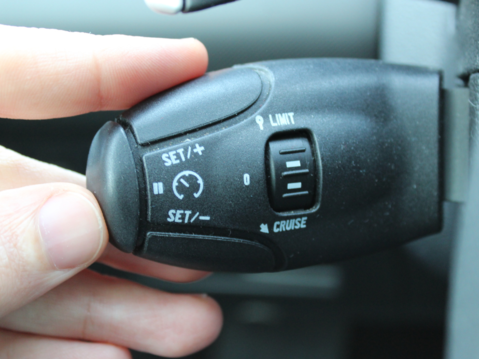How Does Cruise Control Work?
A Look at the Technology That Maintains Your Vehicle's Speed
As a feature regularly coming as standard on new cars, cruise control is the new normal for many motorists. But do you know what it can do or how to use it? Ideal for motorway and long-distance driving, cruise control is a driver-assistance technology quickly becoming the norm in many models. Advanced Driver Assistance Systems (ADAS) is developing at a rapid rate, with so many exciting safety features on the horizon. In this guide, we’ll explore what you can expect from this technology, and when you should be using it.
What is cruise control?
Cruise control allows you to regulate a vehicle’s speed without keeping your foot on the accelerator — as the name suggests, it’s usually used at cruising speeds, where you have lots of open road ahead of you. For the driver, cruise control usually operates from the steering wheel itself, or the indicator stalks — look out for a symbol that looks like a speedometer with an arrow pointing towards it.
To set your cruise control, you’ll need to already be travelling at the speed you want to be going at. Simply press the appropriate cruise control button, and let the car take over some of the legwork. To pause cruise control to allow you to brake if you find yourself behind a slower car, just hit ‘cancel’ (then ‘resume’ when it’s safe to do so), or ‘off’ if you’re ready to take over permanently. Pressing any of the pedals does the same thing.
Adaptive Cruise Control can help you out even if your speed needs adjustment — more on that later.
What are the benefits of cruise control?
1. You get a rest
Whilst it is in no way a feature that means you can pay any less attention to the road, your right foot does get a break from controlling the accelerator on roads such as motorways.
2. Less temptation to speed
If you set your cruise control below the legal limit, you no longer have to worry about your speed creeping up, which could otherwise see you fall foul of speed cameras, such as the variable ones on the gantries above motorways.
3. It saves money
Whilst not its primary feature, using cruise control could actually beat down your fuel costs if you’re a regular motorway user. Staying at one speed is more efficient than constantly adjusting it.
What are the different types of cruise control?
1. Standard cruise control
This allows you to travel at one speed without accelerating until you turn the cruise control off.
2. Adaptive Cruise Control
Adaptive Cruise Control is more intuitive and therefore takes ‘autopilot’ one step further. It’s something we’re seeing crop up on vehicle specifications more and more!
By using sensors and radars, the system can detect cars in front of you, automatically adjusting the speed of your vehicle to fall in line with theirs - it can even apply the brakes on your behalf to make this possible.
When do you use cruise control?
You will generally use cruise control when it’s safe to travel at a speed of 30 MPH or over, though it’s mostly used at higher speeds, such as 50, 60 or 70 MPH on motorways or dual carriageways.
When is it a bad time to use cruise control?
Cruise control isn’t a good idea if you’re on roads where your speed needs to change a lot, or if there are lots of turns and corners.
If you’re still keen to keep your speed below a certain level even when you’re not ‘cruising’, you could still make the most of a speed limiter, if your car has one, to prevent you from going over a certain speed whilst you’re still in full control of acceleration.
Used cars with cruise control at West Motors
Thanks to the calibre of our stock here at West Motors in Uxbridge, you can expect many of the models at our West London showroom to come with cruise control, if not Adaptive Cruise Control. This is usually alongside a whole host of safety and driver convenience features, such as parking assist, blind spot monitoring, and satellite navigation.
If you’re looking for a well-equipped used car in the London area, you’ll find plenty of choice here at West Motors — we can help you finance it too! Simply head to our online showroom to get shopping.



